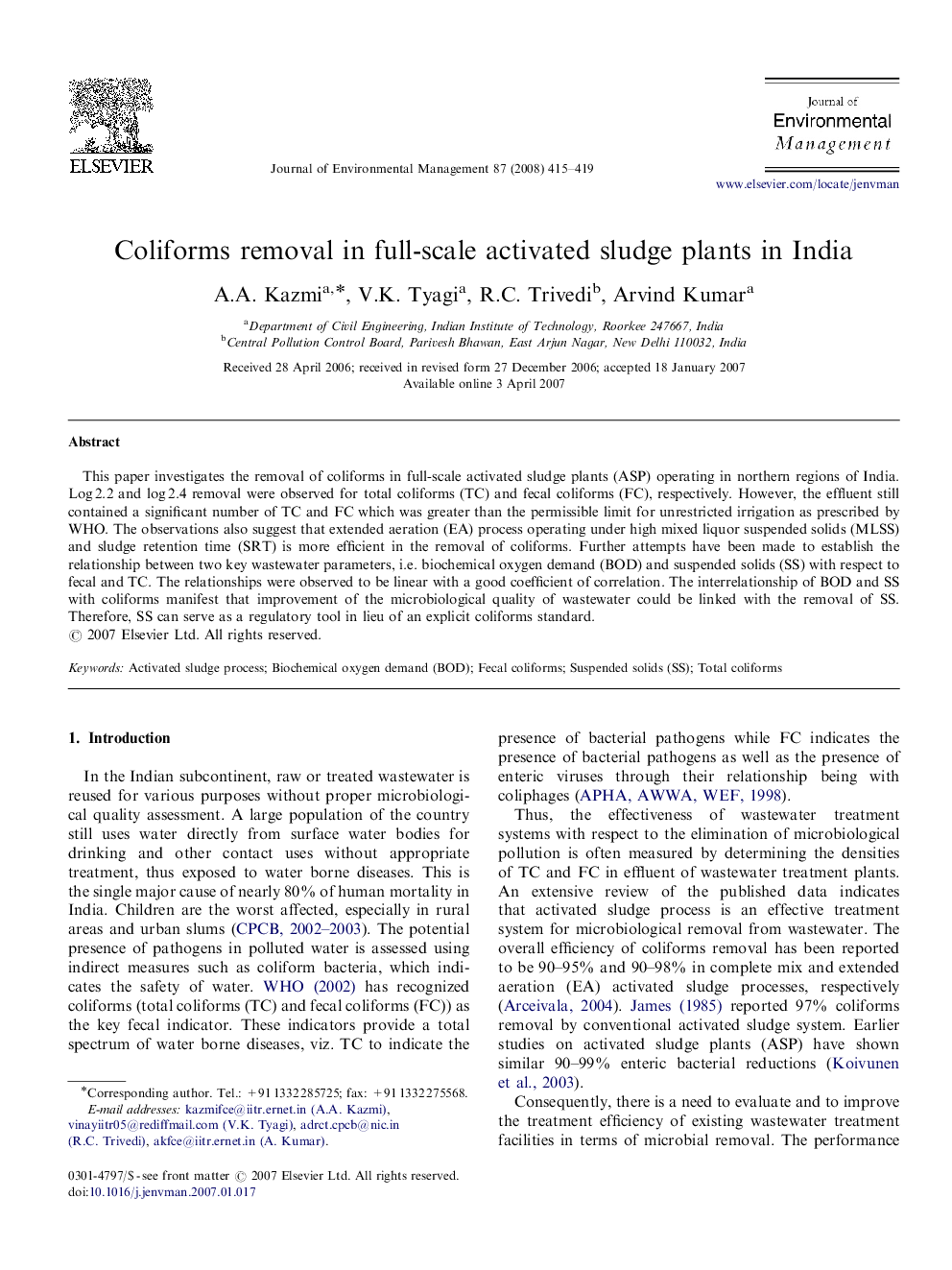| Article ID | Journal | Published Year | Pages | File Type |
|---|---|---|---|---|
| 1057601 | Journal of Environmental Management | 2008 | 5 Pages |
This paper investigates the removal of coliforms in full-scale activated sludge plants (ASP) operating in northern regions of India. Log 2.2 and log 2.4 removal were observed for total coliforms (TC) and fecal coliforms (FC), respectively. However, the effluent still contained a significant number of TC and FC which was greater than the permissible limit for unrestricted irrigation as prescribed by WHO. The observations also suggest that extended aeration (EA) process operating under high mixed liquor suspended solids (MLSS) and sludge retention time (SRT) is more efficient in the removal of coliforms. Further attempts have been made to establish the relationship between two key wastewater parameters, i.e. biochemical oxygen demand (BOD) and suspended solids (SS) with respect to fecal and TC. The relationships were observed to be linear with a good coefficient of correlation. The interrelationship of BOD and SS with coliforms manifest that improvement of the microbiological quality of wastewater could be linked with the removal of SS. Therefore, SS can serve as a regulatory tool in lieu of an explicit coliforms standard.
